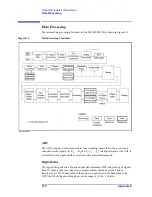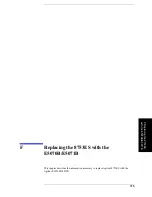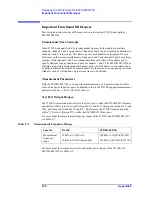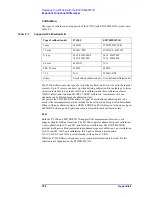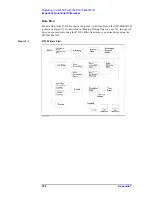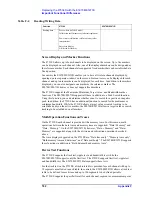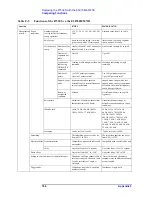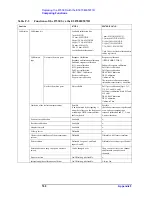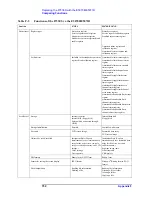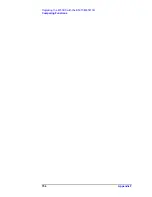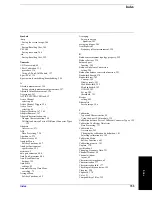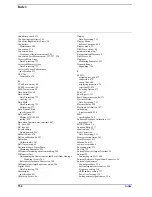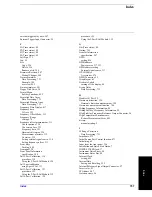
742
Appendix F
Replacing the 8753ES with the E5070B/E5071B
Important Functional Differences
Screen Display and Marker Functions
The 8753ES allows up to four channels to be displayed on the screen. Up to five markers
can be displayed on each channel. Also, one of the displayed markers can be designated as
the reference marker. Each channel also supports a fixed marker that can be established at a
fixed position.
In contrast, the E5070B/E5071B enables you to have all sixteen channels displayed by
opening up nine separate windows on the screen. Sixteen traces can be displayed for each
channel, and up to nine markers can be displayed for each trace. In addition to the markers
displayed, you can also designate one marker as the reference marker. The
E5070B/E5071B, however, does not support fixed markers.
The 8753ES supports the Maximum, Minimum, Target value, and Bandwidth marker
functions. The E5070B/E5071B supports all these in addition to a Peak Search function.
Using this function, you can determine whether or not to search for a positive or negative
peak. In addition, the 8753ES has an additional function to search for the maximum or
minimum bandwidth. While the 8753ES allows a target value or search tracking to be
established only on the active marker, the E5070B/E5071B allows a target value or search
tracking to be established on all markers.
Math Operation Functions on Traces
On the 8753ES, each channel is provided with a memory trace. For this reason, math
operations between the data trace and memory trace are supported: “Data / Memory” and
“Data
−
Memory”. On the E5070B/E5071B, however, “Data
×
Memory” and “Data +
Memory” are supported along with the division and subtraction operations described
above.
The trace displays supported on the 8753ES are: “Data trace only”, “Memory trace only”,
“Both memory trace and data trace”, and “Data math only”. The E5070B/E5071B supports
these functions in addition to “Both data math and memory trace”.
Device Test Functions
The 8753ES supports the limit test, ripple test, and bandwidth test, while the
E5070B/E5071B supports only the limit test. The 8753ES supports limit test, ripple test
and bandwidth test. The E5070B/E5071B also supports these tests.
For the limit test on the 8753ES, a limit test table is provided for each channel with up to
18 segments are allowed in each table. In contrast, the E5070B/E5071B allows a limit test
table to be defined for each trace and up to 100 segments to be defined per table.
The 8753ES supports the pass/fail result for each channel, segment or measurement point
Reading data
Pre-raw data (in Take4 mode)
Calibration coefficient array (after interpolation)
Power meter calibration coefficient array (after
interpolation)
Entry area display
All lists in list format
Table F-4
Reading/Writing Data
Function
8753ES
E5070B/E5071B
Summary of Contents for E5070B
Page 6: ......
Page 30: ...24 Contents ...
Page 34: ...28 Chapter1 Precautions Before contacting us ...
Page 286: ...280 Chapter6 Data Analysis Using the Equation Editor ...
Page 430: ...424 Chapter12 Optimizing Measurements Performing a Segment by Segment Sweep segment sweep ...
Page 538: ...532 Chapter15 Measurement Examples Executing Power Calibration ...
Page 634: ...628 AppendixB Troubleshooting Warning Message ...
Page 732: ...726 AppendixD Softkey Functions Trigger Menu ...
Page 740: ...734 AppendixE General Principles of Operation Data Processing ...
Page 760: ...754 AppendixF Replacing the 8753ES with the E5070B E5071B Comparing Functions ...



